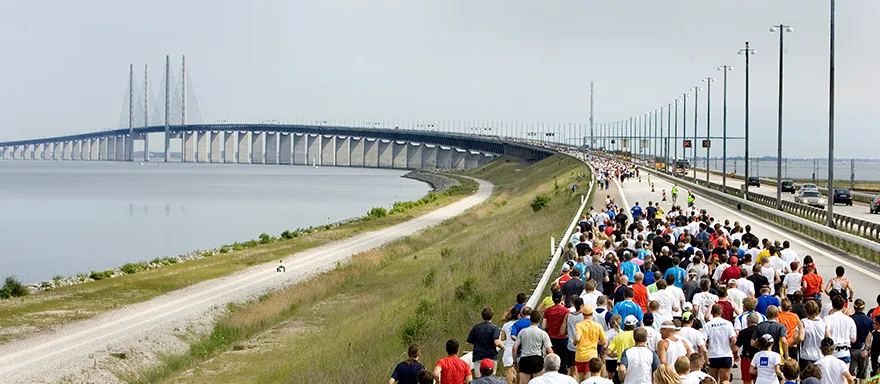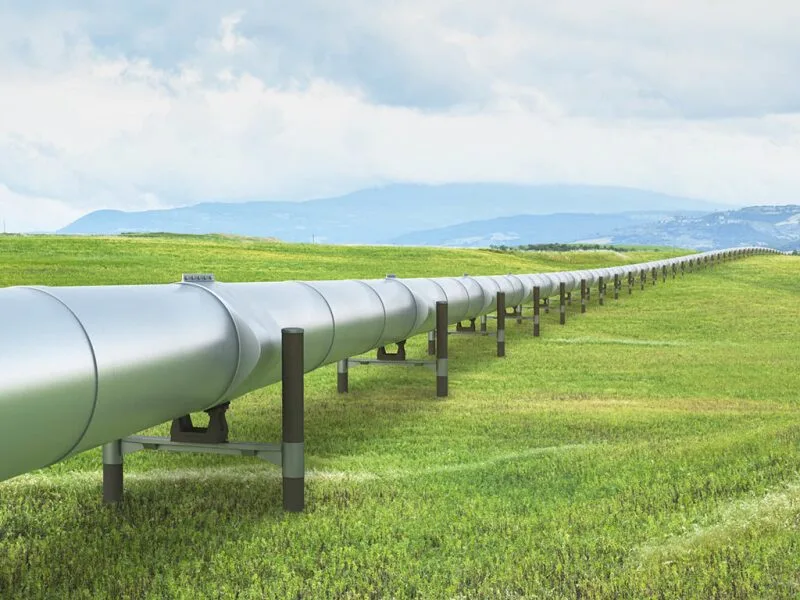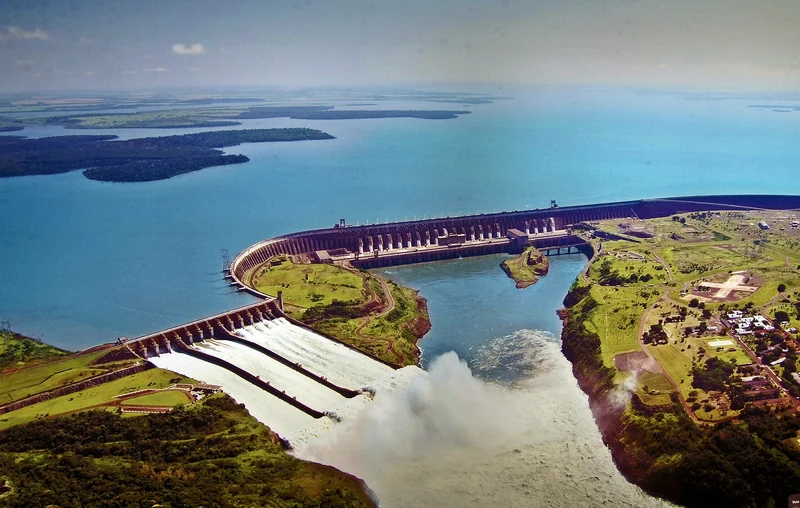Discover How Fiber Optic Sensor Technology Transforms Infrastructure Health Monitoring & Enhances Safety.
Ensuring the safety and longevity of our infrastructure is more critical than ever. Fiber Optic Sensor (FOS) technology offers unparalleled precision and real-time data, transforming how we maintain and protect vital structures such as bridges, pipelines, dams, and buildings.
The impact of infrastructure failure can be devastating, resulting in loss of life, economic damage, and environmental harm. Traditional monitoring methods often rely on periodic inspections, which can miss critical issues between assessments.
FOS technology, on the other hand, provides continuous monitoring, enabling engineers to respond promptly to potential problems and prevent catastrophic failures. By harnessing the power of fiber optic sensors, we can ensure the integrity of our infrastructure, safeguard communities, and build a more resilient future.
What are Fiber Optic Sensors?
Fiber optic sensors use optical fiber to detect changes in physical quantities, such as temperature, pressure, strain, vibrations, rotations, and chemical species concentrations. Fiber sensors can be used in tight spaces or where a small profile is beneficial.
Real-World Applications of Fiber Optic Sensors
Fiber Optic Sensor technology has proven versatile and effective in various real-world applications.
From monitoring the structural integrity of critical infrastructure to detecting potential hazards in harsh environments, fiber optic sensors have demonstrated their value in enhancing safety, reducing costs, and improving efficiency.
For instance, Sensuron’s Maximum Precision DFOS Systems, such as the RTS250+ DFOS System, offer high-speed and high-resolution monitoring capabilities, making them ideal for applications that require real-time data and precise spatial resolution.
The RTS125+ DFOS System, on the other hand, provides a ruggedized multi-sensing platform for harsh environments. At the same time, the Summit DFOS System offers software-selectable spatial solutions for a range of applications.
In addition, Sensuron’s Static Strain DFOS System provides a low-cost strain platform for monitoring multiple areas simultaneously, making it an attractive solution for replacing single-point strain sensing solutions such as strain gauges.
Sensuron offers a range of FBG (Fiber Bragg Grating) interrogators, including the lightweight and affordable GTR FBG Interrogator System and the miniature turnkey SGTR FBG Interrogator, which provides full, solid-state multi-channel fiber sensing versatility.
The MIP3 FBG Interrogator, meanwhile, offers multi-channel FBG interrogation for ultra-high stability measurements.
Now, let us explore DFOS’s most significant applications, including its use in monitoring bridges, pipelines, dams, and buildings, and how it’s positively impacting these areas.
Fiber Optic Sensing Monitoring Bridges
Fiber optic sensors embedded in bridges can monitor strain, load, and structural integrity in real time, providing critical insights into the bridge’s condition.
This technology is particularly valuable for long-span bridges, suspension bridges, and bridges in harsh environments where traditional monitoring methods may be inadequate.
The Oresund Bridge, which connects Denmark and Sweden, is a prime example of the effectiveness of FOS in bridge monitoring. This 16-kilometer-long bridge is a critical transportation link between the two countries, and its safe operation is paramount.

By utilizing FOS, engineers can monitor stress and temperature changes in real time, enabling them to:
- Detect potential issues before they become major problems.
- Optimize maintenance schedules and reduce downtime.
- Extend the lifespan of the bridge.
- Ensure the safety of drivers and pedestrians.
The FOS system installed on the Oresund Bridge consists of fiber optic sensors embedded in the bridge’s structure. These sensors transmit data to a central monitoring station, which analyzes the data to identify changes or anomalies.
This allows engineers to take proactive measures to address potential issues.
Some of the specific parameters that FOS can monitor on bridges include:
- Strain: FOS can measure the deformation and strain on the bridge’s structure, allowing engineers to detect potential issues like cracks or damage.
- Load: FOS can monitor the weight and distribution of traffic on the bridge, enabling engineers to optimize maintenance and repairs.
- Temperature: FOS can detect changes in the bridge’s structure and materials.
- Vibration: FOS can measure the bridge’s vibration and movement, allowing engineers to detect potential issues like resonance or fatigue.
By leveraging FOS technology, bridge operators and engineers can ensure these critical infrastructure assets’ safety, efficiency, and longevity.
Monitoring Pipelines’ Health Structure with DFOS
Distributed fiber optic sensing (DFOS) systems offer a cutting-edge solution for monitoring pipeline health and integrity.

By detecting minute changes in temperature and strain, DFOS can instantly identify leaks or breaches, enabling pipeline operators to take swift action to prevent catastrophic failures.
The Keystone Pipeline spans over 4,300 kilometers and is a critical artery for oil transportation in North America. By deploying DFOS technology, the pipeline’s operators can:
- Detect leaks and ruptures in real-time, minimizing environmental damage and economic losses.
- Monitor structural health and integrity, enabling proactive maintenance and reducing downtime.
- Optimize pipeline operations, improving efficiency and reducing costs.
- Ensure compliance with safety and regulatory standards.
DFOS systems for pipeline monitoring typically consist of fiber optic sensors installed along the pipeline. These sensors transmit data to a central monitoring station, which analyzes the data to identify changes or anomalies, allowing operators to respond quickly to potential issues.
Some of the specific benefits of using DFOS for pipeline monitoring include:
- Real-time monitoring: DFOS provides instant detection of leaks and breaches, enabling swift action to prevent disasters.
- Enhanced safety: DFOS reduces the risk of accidents and environmental damage by identifying potential issues before they become major problems.
- Cost savings: DFOS minimizes downtime and reduces maintenance costs by enabling proactive maintenance and repair.
- Improved efficiency: DFOS optimizes pipeline operations, improving flow rates and reducing energy consumption.
By harnessing the power of DFOS technology, pipeline operators can ensure the safe, efficient, and reliable transportation of oil and gas while reducing environmental impact and improving bottom-line performance.
Structural Health Monitoring of Dams with Fiber Optic Sensors
Fiber optic sensors play a crucial role in monitoring the structural health of dams, which are critical infrastructure assets that require constant surveillance to ensure their stability and safety.
By detecting changes in pressure, temperature, and strain, fiber optic sensors can identify potential issues before they become major problems, enabling dam operators to take proactive measures to prevent catastrophic failures.
The Itaipu Dam, located on the border between Brazil and Paraguay, is one of the largest hydroelectric dams in the world and a prime example of the effectiveness of fiber optic sensors in dam monitoring.

By deploying DFOS technology, the dam’s operators can:
- Monitor the structural health of the dam in real-time, detecting any changes or anomalies.
- Identify potential issues like cracks, erosion, or settlement, enabling proactive maintenance and repair.
- Optimize dam operations, improving efficiency and reducing costs.
- Ensure the safety of people and the environment by preventing catastrophic failures.
Fiber optic sensors used for dam monitoring are typically installed in the dam’s structure, including the foundation, walls, and spillways.
These sensors transmit data to a central monitoring station, where it is analyzed to identify any changes or anomalies. Some of the specific parameters that fiber optic sensors can monitor include:
- Pressure: Sensors can detect changes in water pressure, indicating potential issues like leaks or erosion.
- Temperature: Sensors can monitor temperature changes, affecting the dam’s structure and materials.
- Strain: Sensors can measure the deformation and strain on the dam’s structure, enabling operators to detect potential issues like cracks or settlement.
Using fiber optic sensor technology, dam operators can ensure these critical infrastructure assets’ safety, efficiency, and longevity while reducing maintenance costs and environmental impact.
Structural Health Monitoring of Buildings with Optical Fiber Sensor Technology
Optical Fiber Sensing (OFS) technology is vital in monitoring building structural health. It enables the detection of changes in strain and temperature that can indicate potential issues before they become major problems.
By harnessing the power of OFS, building owners and managers can ensure the safety, efficiency, and longevity of their structures while also reducing maintenance costs and minimizing downtime.
The Burj Khalifa, the tallest building in the world, located in Dubai, is a prime example of the effectiveness of FOS in building health monitoring.

By deploying FOS technology, the building’s operators can:
- Monitor the structural integrity of the building in real-time, detecting any changes or anomalies.
- Identify potential cracks, settlement, or foundation problems, enabling proactive maintenance and repair.
- Optimize building operations, improving efficiency and reducing costs
- Ensure the safety of occupants and visitors by preventing catastrophic failures.
Optical Fiber Sensing systems for building health monitoring typically consist of fiber optic sensors installed in the building’s structure, including the foundation, columns, beams, and walls.
These sensors transmit data to a central monitoring station, where it is analyzed to identify any changes or anomalies. Some of the specific parameters that FOS can monitor include:
- Strain: Sensors can measure the deformation and strain on the building’s structure, enabling operators to detect potential issues like cracks or settlement.
Temperature: Sensors can monitor temperature changes, affecting the building’s materials and structure.
Vibration: Sensors can measure the building’s vibration and movement, enabling operators to detect potential issues like resonance or fatigue.
By taking advantage of FOS technology, building owners and managers can ensure the safety, efficiency, and longevity of their structures while also reducing maintenance costs and minimizing downtime.
This is especially critical for high-rise buildings, iconic landmarks, and complex structures, where the consequences of failure can be severe.
Benefits of Distributed Fiber Optic Sensing
Distributed Fiber Optic Sensing (DFOS) offers many benefits, making it an attractive solution for infrastructure monitoring.
By harnessing the power of fiber optic technology, DFOS provides a reliable, efficient, and cost-effective way to monitor critical infrastructure. It enables operators to make data-driven decisions and ensure the safety and integrity of their assets.
The benefits of FOS Sensors are endless. Let us share with you just a few:
- Real-Time Data: Fiber optic sensing systems provide continuous, real-time data, enabling instant detection of anomalies.
- Improved Safety: Early detection of potential failures allows for proactive maintenance, reducing the likelihood of catastrophic events.
- Durability and Reliability: Fiber optic sensors are highly durable and resistant to harsh environmental conditions, making them ideal for monitoring infrastructure in challenging settings.
- Cost-Effective: Fiber optic sensing reduces the need for manual inspections, which can be risky and time-consuming.
The Future of Infrastructure Monitoring Using Optical Fiber Sensing
As the demand for safer and more efficient infrastructure grows, the adoption of fiber optic sensing will likely increase. FOS technology enhances the safety and longevity of existing structures and informs the design and construction of future infrastructure projects.
With ongoing advancements in Fiber Optic Sensing (FOS) technology, we can expect more sophisticated and cost-effective solutions for monitoring structures.
Conclusion: Fiber optic sensing (FOS) is revolutionizing how we monitor and maintain our infrastructure. By providing real-time, high-resolution data over long distances, FOS enhances safety, reduces maintenance costs, and extends the lifespan of critical structures.
As we strive to build more resilient infrastructure, fiber optic sensing will undoubtedly play a crucial role in shaping a safer and more sustainable future.
As you’ve seen, Distributed Fiber Optic Sensing (DFOS) and FBG interrogators offer a powerful solution for monitoring and maintaining critical infrastructure.
If you’re interested in learning more about how Sensuron’s DFOS Systems and FBG Interrogators can help you optimize your operations, enhance safety, and reduce costs, we invite you to contact our team of experts today to schedule a consultation and discover how Sensuron’s innovative solutions can benefit your organization..
With years of experience in the field, our engineers and technicians are dedicated to providing tailored solutions that meet your needs. Whether you’re looking to upgrade your existing monitoring systems or explore new applications for DFOS and FBG technology, we’re here to help.

